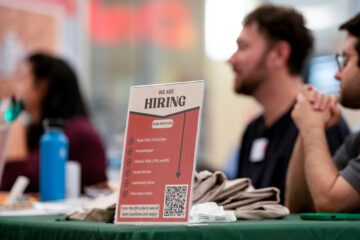More than half of the workforce is at least somewhat likely to look for other options in the next 12 months.
Bosses who think they have a great team who’ll never want to leave may want to reconsider — 51% of adults working or looking for work are at least somewhat likely to look for other options in the next 12 months.
According to a new report from Bankrate.com, just over half of American adults who are currently in the workforce will look for other work in the coming year. While that number is down from the 55% observed last year, it is still a strong indication of the ongoing phenomenon known as “The Great Resignation.”
Why Are So Many People Quitting Or Looking For Other Options?
As can be expected, low pay and opportunities for advancement are a primary reason many are unhappy at their current work arrangement — while 71% of adults making less than $30,000 a year are looking for a new job, only 39% of those making above $80,000 are doing the same.
Four in every five of those aged between 18 and 25 and 61% of those between 26 and 41 are currently looking for a new job. In contrast, only 37% of those between 42 and 57 are doing the same.
Bankrate.com
“While it is reasonable to ask an employer about the prospects for additional compensation or better working conditions, it is sometimes simply more effective to seek a new job to achieve these goals,” Mark Hamrick, a senior economic analyst at Bankrate.com, said in a statement. “Clearly, that’s exactly what a good number of workers have done or say they intend to do.”
What Do Workers Want?
For employers looking to retain strong workers, there is no need to reinvent the wheel — 52% of those polled said that higher pay is more important now than it was pre-pandemic. A further 43% are prioritizing flexible work hours while 34% said the ability to work remotely is more important than ever.
With current hiring trends failing to make up for the nationwide labor shortage, employees with jobs that do not meet those needs are in a relatively good position to look for other options.
“As long as the unemployment rate remains low, workers will maintain a high level of job security,” Hamrick said. “And with that, they have a high degree of confidence that they can find work more to their liking. This provides an opportunity for better work/life balance and higher pay, which should translate to progress with their personal finances.”
Over the last year, 48% of the workforce has taken concrete steps to look for other employment. Those include asking for more work flexibility (20%), requesting a raise (15%) and, when that does not work, getting a new job (21%). A further 12% quit without getting another job.


